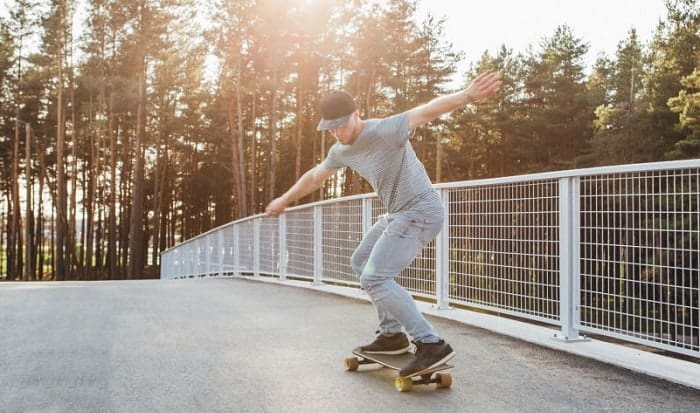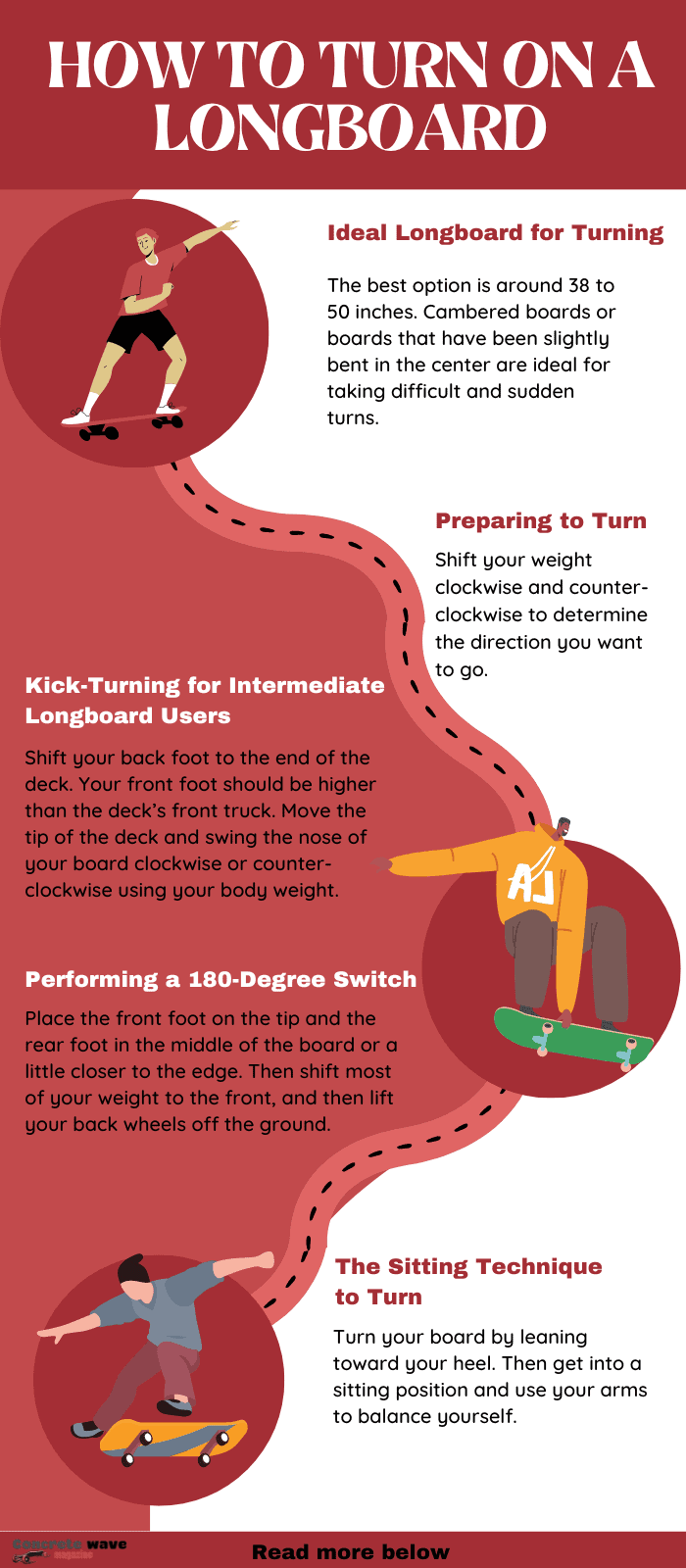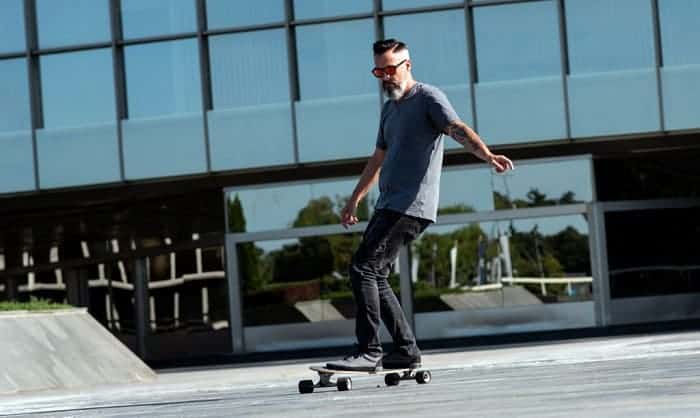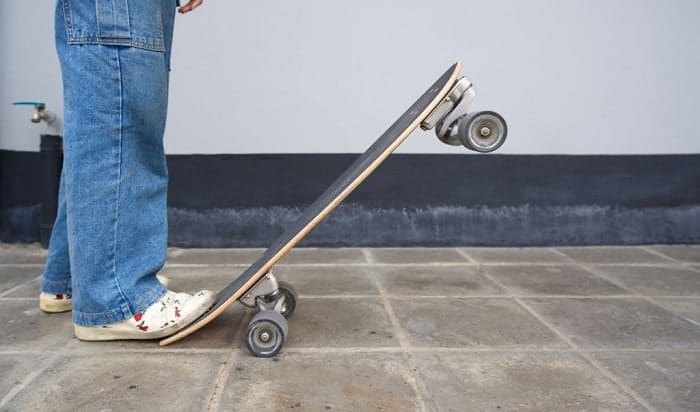Table of Contents
Longboards, the extended cousin of skateboards, are meant to cruise greater distances comfortably. Due to their length, longboards are not agile and swift like skateboards.
To ride safely on streets, pathways, and downhill slalom courses, all riders must master longboarding techniques, such as carving around tight corners. Moving a longboard requires balance, skill, and lots of practice.
Want to know how to turn on a longboard? Continue reading.
Ideal Longboard for Turning
The best option is a longboard that is around 38 to 50 inches. This type is the best for learning how to make tight turns. Proceed to longer boards after mastering tight turns on this one.
Look for boards that are “cambered” or have been bent slightly in the center since they are good for taking turns that are difficult and sudden.
Add 80A-rated wheels to your board to allow for greater control. Soft wheels also provide more grip on the road, which makes it easier to maneuver in tight spaces.
Preparing to Turn
Make sure your trucks are snug. Stand on the longboard deck and shift your weight clockwise and counter-clockwise to determine if you can turn the longboard in the direction you want to go.
The wider the trucks are, the more likely it is for your deck to become unsteady and hard to handle.
If you want to alter your trucks, you will have to use a wrench to adjust the tightness of the kingpin nut on your board.
Modify your skateboard trucks as you continue to practice even after you have set the trucks to guarantee an appropriate adjustment. For novices, tighter trucks are often best.
It’s a terrific idea to use an empty and flat area for practice.
Kick-Turning for Intermediate Longboard Users
Kickturns are characterized by the short-lived yet quick lifting of the tip of your longboard while balancing on the rear wheels to redistribute weight and steer your board.
Skaters that use this more sophisticated turning approach are able to shift directions on their board without even increasing their speed. There are five stages that must be taken to complete a kick turn.
Start in your typical riding position. Until you have gained a reasonable amount of momentum, keep on pressing.
The best way to get into a jump is to shift your rear foot to the end of the deck. Your front foot should be higher than the deck’s front truck. It is critical that you continue to apply pressure on the middle of the platform until you are prepared to really rotate.
Put more force on your back foot gradually. When you balance on your back wheels, your board’s nose will lift and you’ll be in the air. Try to keep your center of gravity above the center of the board to prevent falling backward or scratching the tail of the longboard.
Move the tip of the deck in the direction you want it to go. Swing the nose of your board clockwise or counter-clockwise (depending on where you want to rotate) using your body weight. Use your front foot, hips, and shoulders to turn the board.
Back up on your front foot. Once your front wheels are down again, you’ll be able to complete your turn.
Performing a 180-Degree Switch
Place the front foot on the tip and the rear foot in the middle of the board or a little closer to the edge. Let your frame start to pivot.
Make subtle adjustments to your weight distribution by shifting most of it to the front and then lift your back wheels off the ground.
Your board and legs will move accordingly. As the exercise nears the conclusion, use your guiding foot to bear part of your weight, and the switch is complete.
The Sitting Technique to Turn
While in the past most of your spins may have only consisted of utilizing your upper torso to lean and turn your board down with your feet, this section might change the way you move.
Here’s the thing, as you get to quicker and sketchier turns, you will need more than just your feet.
If you only use your feet, you may see yourself hopping and jerking uncontrollably, and you may not pull off tight turns, in which case you may slam into a barrier or some other unpleasant obstacle.
There is another approach, but you can only execute it with the heels. Doing it might result in the quickest long turn you can perform.
First, turn your board by leaning towards your heel.
While doing so, get into a sitting position (your legs should be at an angle of about 90 degrees). Also, use your arms to balance yourself.
Remember to put as much weight as possible on your front foot. This will give you more stability.
Conclusion
Longboard turning is perhaps the most mysterious part of longboarding. Many skateboarders have longboarded for years and still don’t know how to turn a longboard around a corner.
Knowing how to turn on a longboard is a pretty essential skill that you will need to master if you are going to be doing much cruising or carving.
As a novice, you may find it difficult to turn. The more quickly you learn to use your body weight to pivot to the side you choose effortlessly, the easier it will be to turn the way you want to.

I am Michael, and I have been enjoying this fun sport for seven years. And nothing is better than having a community to share our passion for those thrilling tricks. I am ready to tell you all I know about skateboarding, showing you how to choose a good board and trick to start and how the practice goes. Stay tuned!





